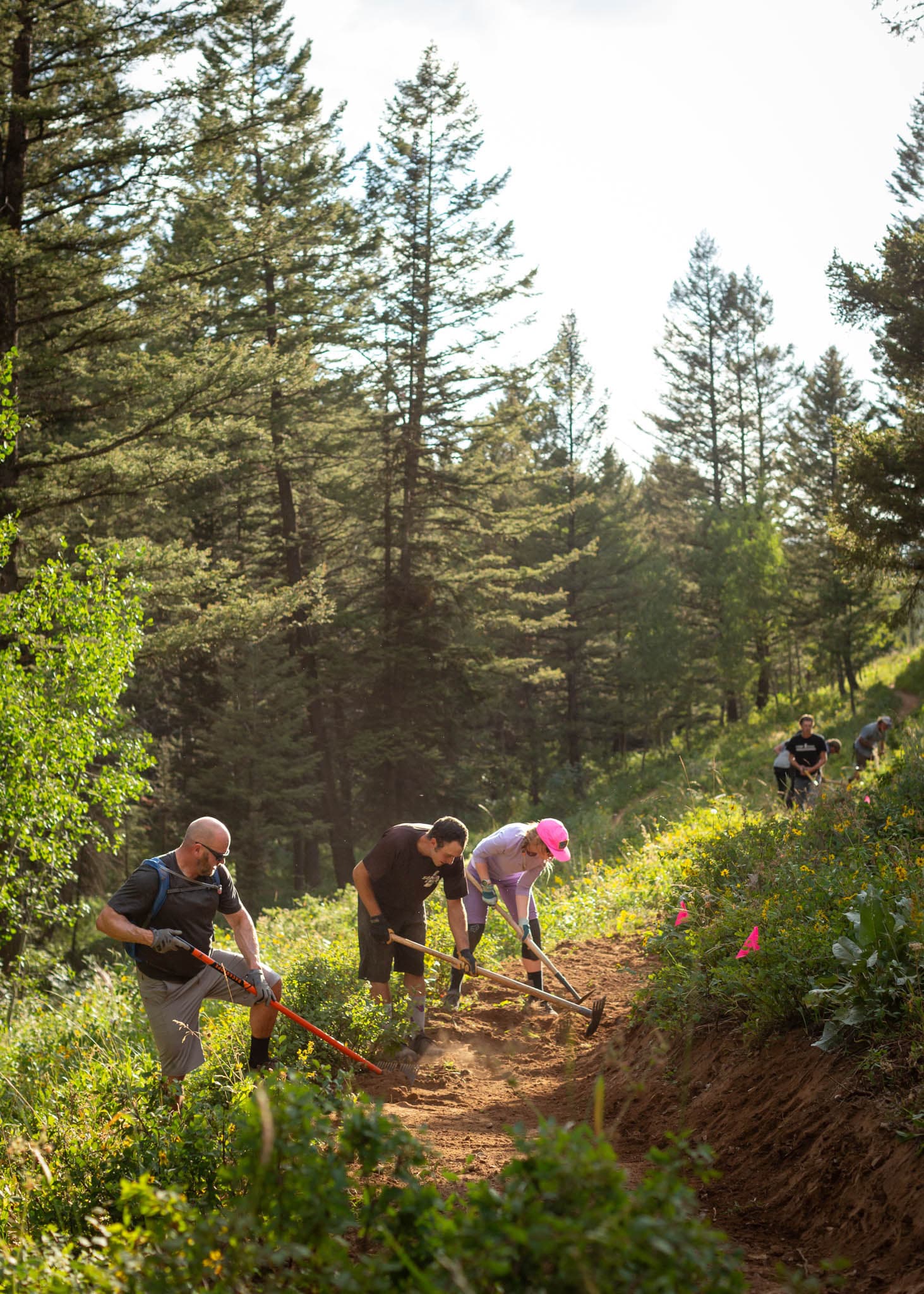Dark Sky Tourism in the Limelight
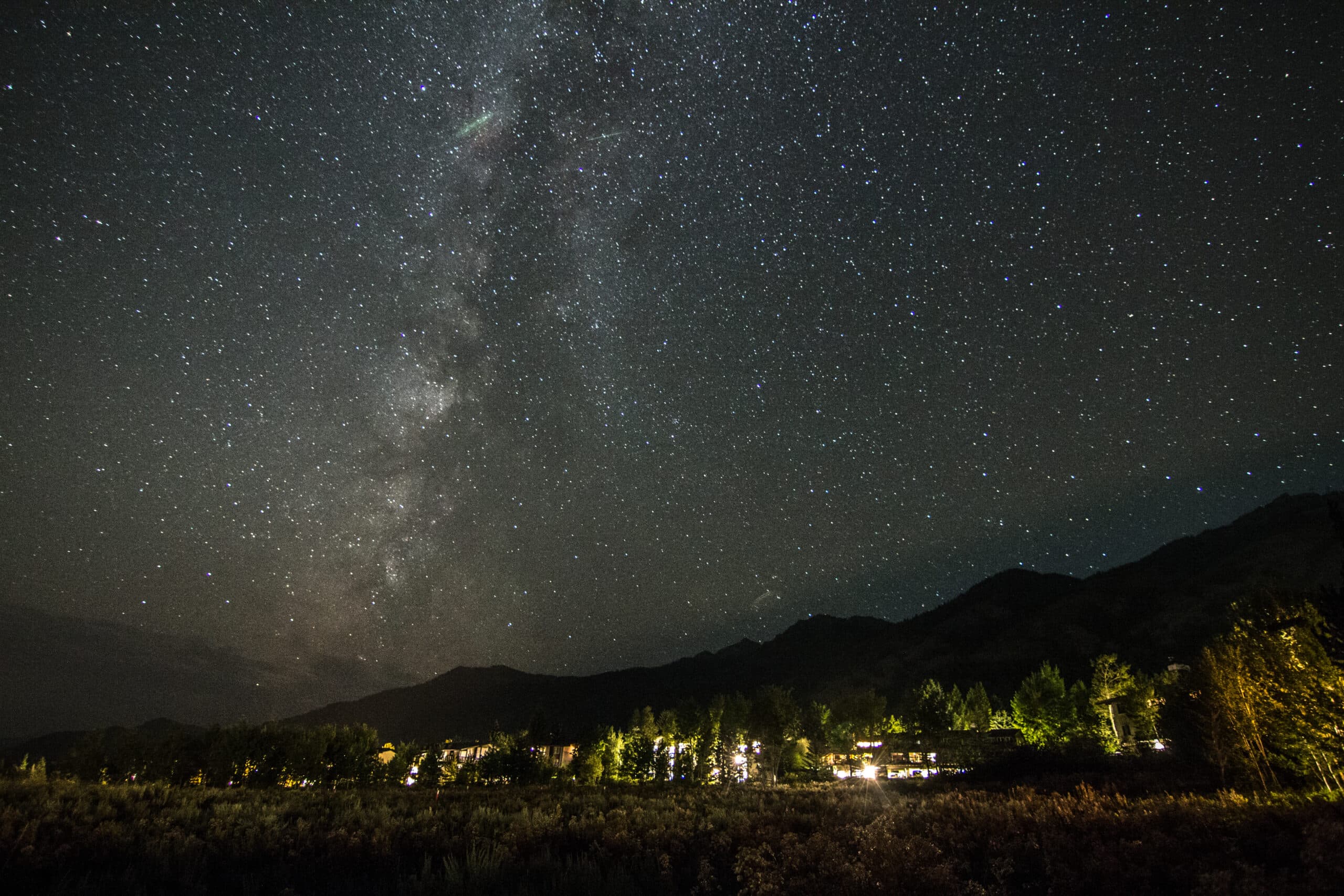
As the summer night dims, Dr. Samuel Singer of Wyoming Stargazing breaks out his enormous telescopes, while eager onlookers in downtown Driggs stare up at the sky.
These terms are tossed around as we peer into scopes, watching the first of the evening’s stars—celestial bodies composed of hydrogen and helium—crest the horizon. Dr. Singer names each one as he navigates the telescopes’ viewfinders over and over again for spectators, in an attempt to keep up with the earth’s rotation that quickly turns dusk into dark sky.
“What we’re looking at is twenty-five light years away,” Dr. Singer
says eagerly.
“Does that mean if we traveled there, I’d be twenty-five years older upon arrival?” asks a person in the intimate audience.
This is where I get lost. I can’t truly wrap my head around twenty-five light years of travel.
What is not lost on me, however, is the beauty and wonder of looking up at the night sky, free of a crowded city’s light pollution. And, as the sky gets darker and the Milky Way comes into view, it makes me feel like a minute part of an energy much greater than my human experience on earth.
Traveling to remote locales in search of astronomic wonders, or Dark Sky Tourism, has quickly become a thing in the Mountain West, as places like Teton Valley and Jackson Hole aim to maintain their dark night skies, free of the artificial light that typically comes with a growing population base. Cities like Driggs, Victor, and Jackson have all implemented outdoor lighting standards so that residents and visitors can continue to enjoy the sense of peace that comes from experiencing nature in its rawest state.
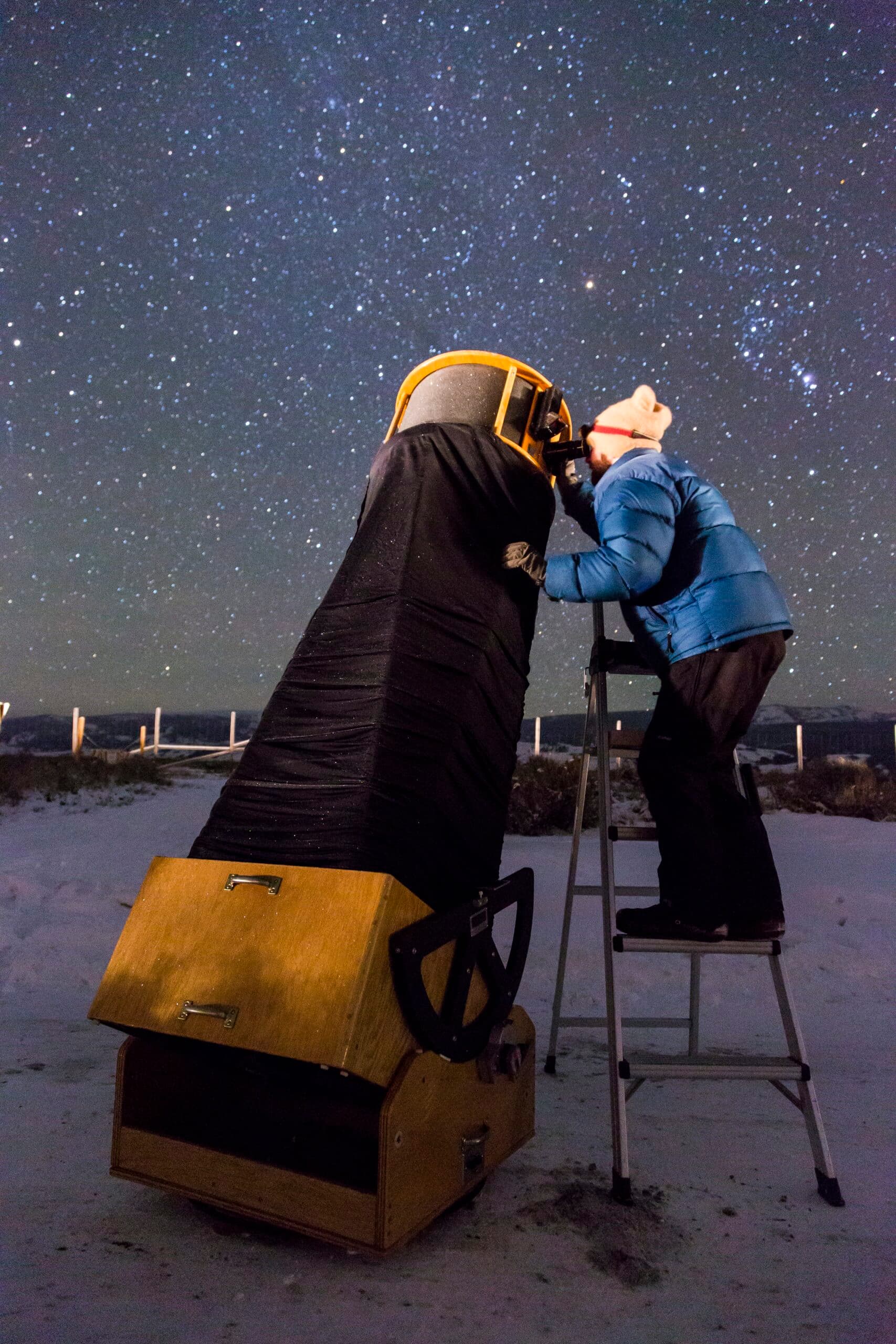
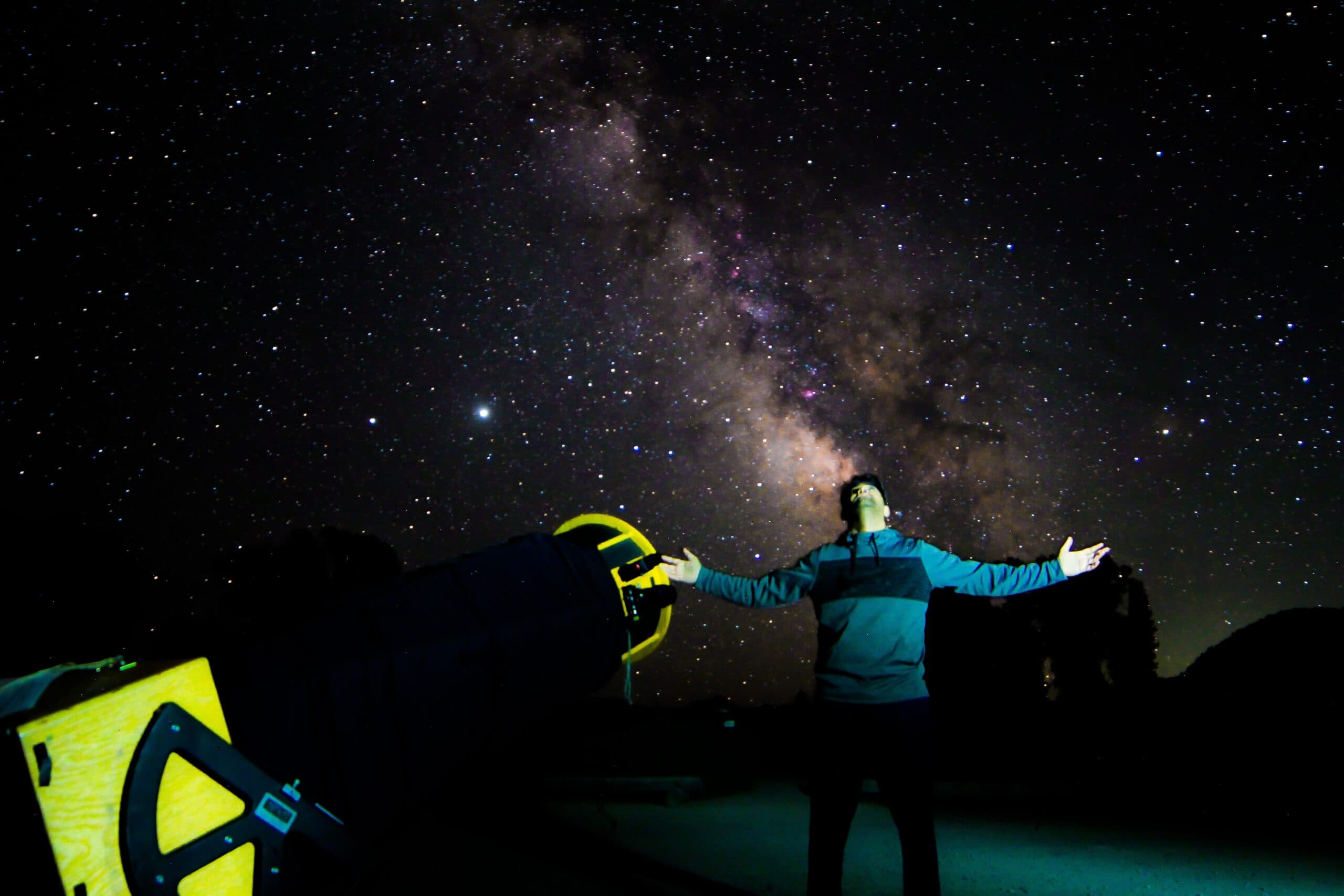


A Case for Dark Skies
There is perhaps no privilege greater than sharing our space with the natural world. As humans living among wildlands, we must become stewards of both the earth and the animals that occupy it. Wildlife relies on the predictability of the rise and fall of the earth’s light cycles. Predators use the night sky to hunt by, and prey use the darkness as an important source of camouflage. The patterns of nocturnal animals, especially, can become severely disrupted by the introduction of artificial light. And many species of insects, birds, and amphibians suffer deadly repercussions due to artificial light, issues that directly affect nature’s food web, according to the nonprofit International Dark-Sky Association (IDA).
While our modern human life has strayed far away from that of our hunter-gatherer ancestors, daylight and darkness still affect our circadian rhythms.
In recent years, the debate around the negative health impacts of blue light—which radiates from computers, televisions, and phones—have gained growing attention. Artificial light has been said to not only affect sleep patterns, it can also increase our risk of obesity, depression, diabetes, and breast cancer. Some turn to using protective eyewear and computer screen filters to shield themselves from blue light. Doctors recommend turning off screens an hour or more before bedtime, and some alternative healers advise us to go outside and witness the rise and fall of the sun for several mornings and nights in a row to reset our rhythm. Similarly, studies have shown that camping resyncs our internal clocks with nature.
Lastly, using unnecessary lighting wastes both energy and money. The IDA estimates that at least 30 percent of all outdoor lighting in the United States is wasted. Outdoor lights that are left on, or used at maximum wattage for no good reason, suck power from an already taxed grid and cost cities sometimes millions of dollars. Implementing the use of LEDs, compact fluorescents, light shields, motion sensors, and timers helps reduce illumination loads and saves energy.
Night Sky Neighborhoods
The International Dark-Sky Association celebrates and protects a night sky filled with stars. It is a recognized authority on light pollution worldwide, as its experts provide guided strategy, monitoring tools, and resources for individuals, policymakers, and industries wanting to adopt responsible outdoor lighting practices. The organization offers five official designations of International Dark Sky Places:
•
International Dark Sky Communities: Legally organized cities and towns that adopt quality outdoor lighting ordinances and efforts.
•
International Dark Sky Parks: Protected conservation spaces that implement good outdoor lighting standards and provide dark sky programs for visitors.
•
International Dark Sky Reserves: A dark zone surrounded by a populated area, where policy controls protect the darkness of the core.
•
International Dark Sky Sanctuaries: The most remote and darkest places in the world, needing the utmost protection.
•
Urban Night Sky Places: Sites near or surrounded by large urban
environments whose planning and design actively promote an authentic nighttime experience.
Locally, Craters of the Moon National Monument and Preserve holds the designation of an International Dark Sky Park, and Central Idaho—the fourteen hundred square miles of Blaine County, Custer County, and surrounding areas—is considered the United States’ first Dark Sky Reserve. Dr. Singer has helped Yellowstone and Grand Teton national parks gather the preliminary data for their International Dark Sky Park applications. This winter, he hopes to try to get things moving forward again.
According to Driggs’ Community Development Director, Doug Self, the City of Driggs is well on its way toward making the decision to pursue an International Dark Sky Community designation.
“Driggs already meets most of the base criteria for this designation and the city council has been discussing various aspects of our dark sky lighting policies, including streetlight retrofits and a public education campaign,” Self says.
The execution of Driggs’ responsible lighting ordinance (spearheaded by the City Outdoor Lighting Committee) states that businesses and residences within city limits have until March 2023 (a ten-year grace period) to comply to what is now considered city code. Many already have. Doug notes that there are some exceptions to this ordinance, such as specific previously installed lighting investments whose value has not been fully depreciated.
Lighting committee organizer and former city council member Ralph Mossman explains that the restrictions aren’t really as tight as people may think.
“It’s not about dark cities, it’s about dark skies,” he says. “You can have a well-lit main street and still have a dark sky. The code actually states that lights need to be pointed down, not up. You can see this on some of the new lights in town; others are also on dimmers that turn down on a timer.”
Eighty-nine-year-old Teton Valley resident and retired nuclear engineer, Jack Liebenthal, was one of the first on the dark sky advocacy scene in Teton Valley, Idaho.
“I go back to the time when nobody knew what dark skies were,” he says. “And man, it just crept up on us! Soon, people began to realize they were losing their view of the Milky Way and couldn’t see the North Star in some locations. I became an advocate for dark skies and wanted to get a jump on helping set regulations in Teton Valley before it got too late.”
And that was just the beginning.
This past summer, the City Outdoor Lighting Committee’s organized event in Driggs, conducted by Dr. Singer of Wyoming Stargazing, was meant to raise community awareness about local dark sky efforts.
“What we’re doing with this gathering is an attempt to build some organization around dark sky efforts,” Mossman says. “Education is action … It’s similar to wilderness; if you don’t keep enforcing [the protected space], then it is no longer protected. If we have a group of people who say we don’t need streetlights in every subdivision, then we might not lose our dark sky status.”
In Jackson, Wyoming Stargazing spearheaded a similar campaign last August called the “Lights Out Challenge JH” to demonstrate how beautiful the downtown night sky is when residents turn off unnecessary lighting. During this event, residents of the town of Jackson, businesses, and the city were asked to turn off their exterior lights from 10:30pm to 11:30pm, or before going to bed, and then join Wyoming Stargazing on the lawn at the Center for the Arts to watch a show “performed” by the Perseid Meteor Shower.
“One light doesn’t do much, but ten thousand will,” Dr. Singer says about the event.
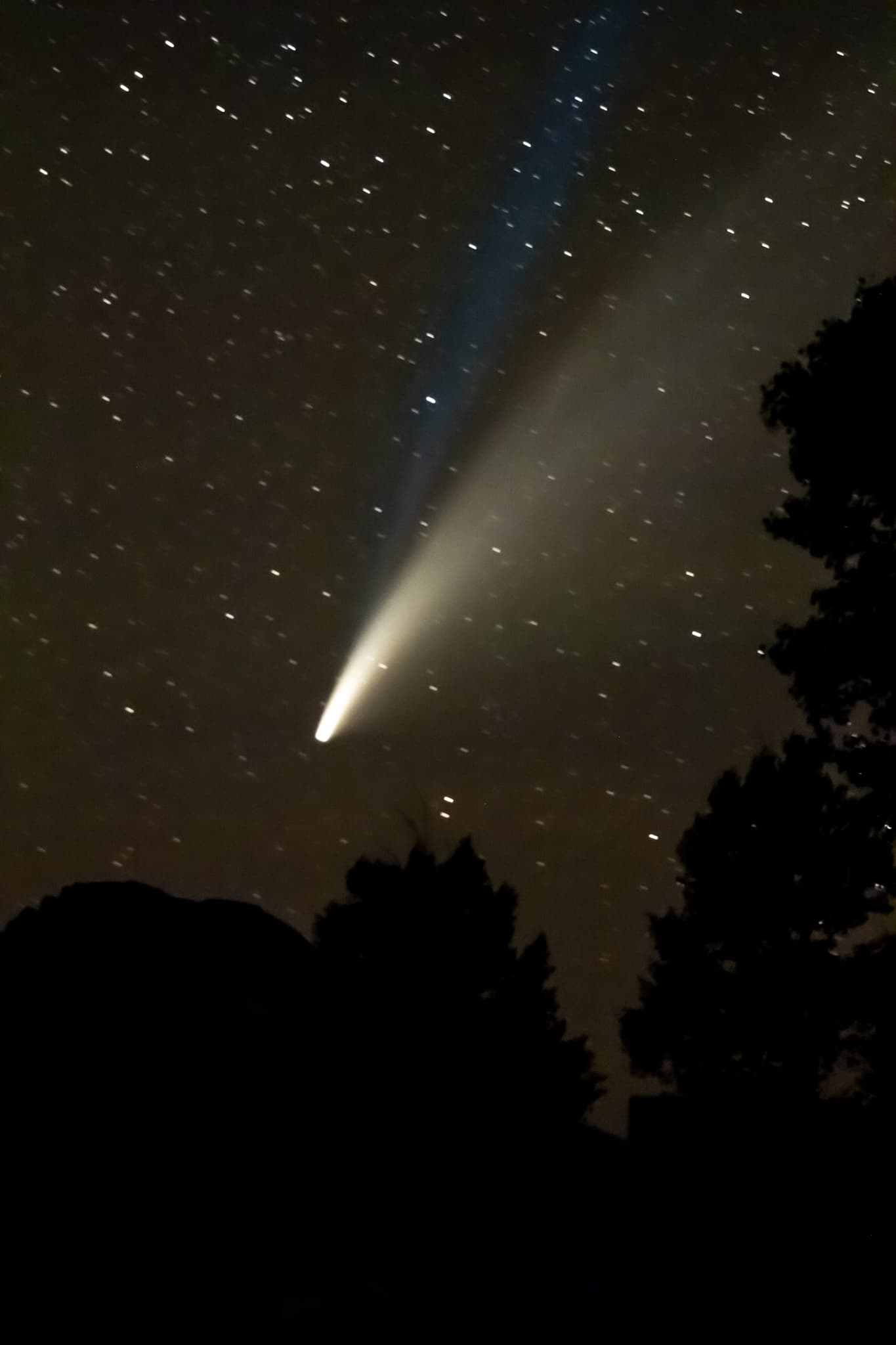
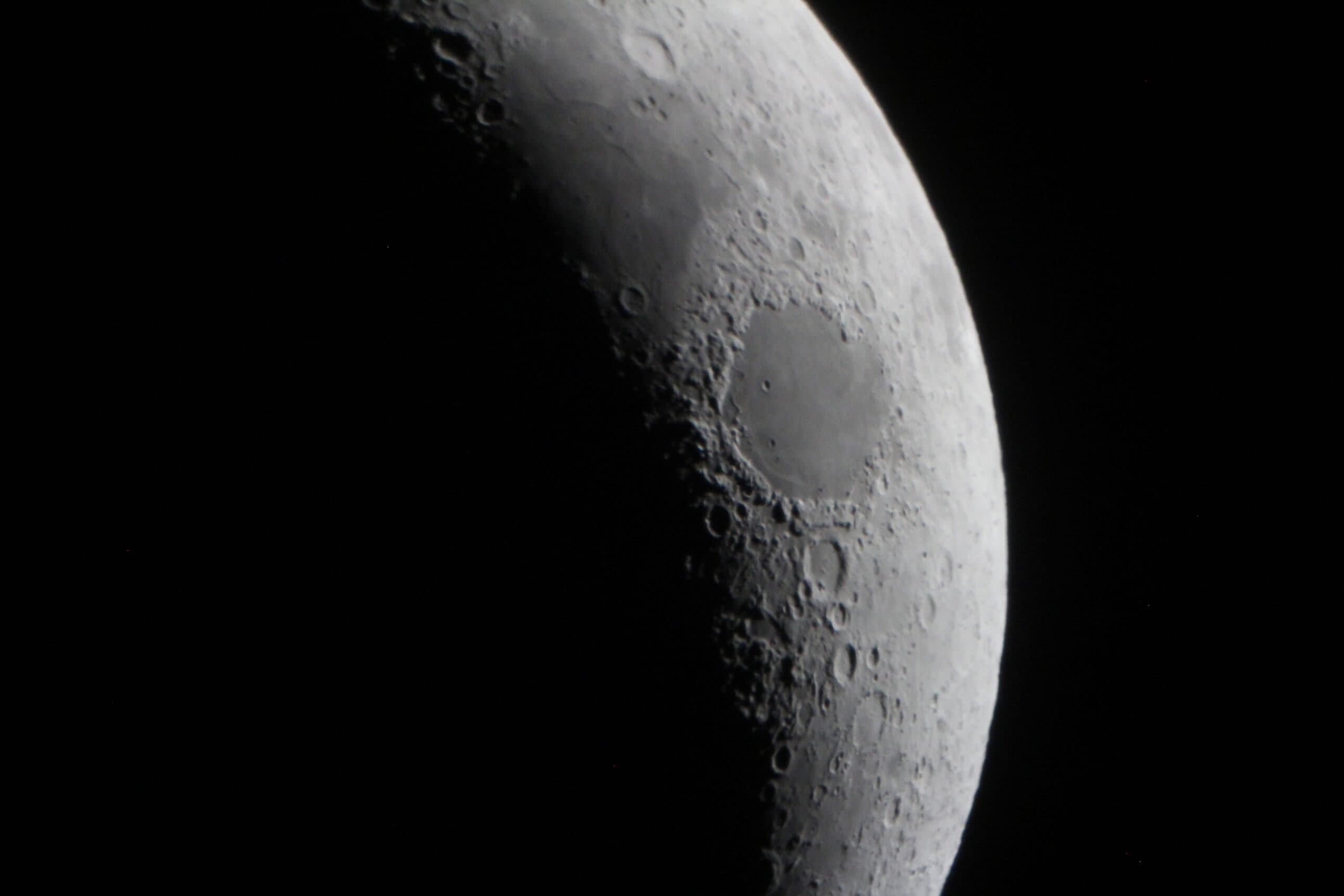
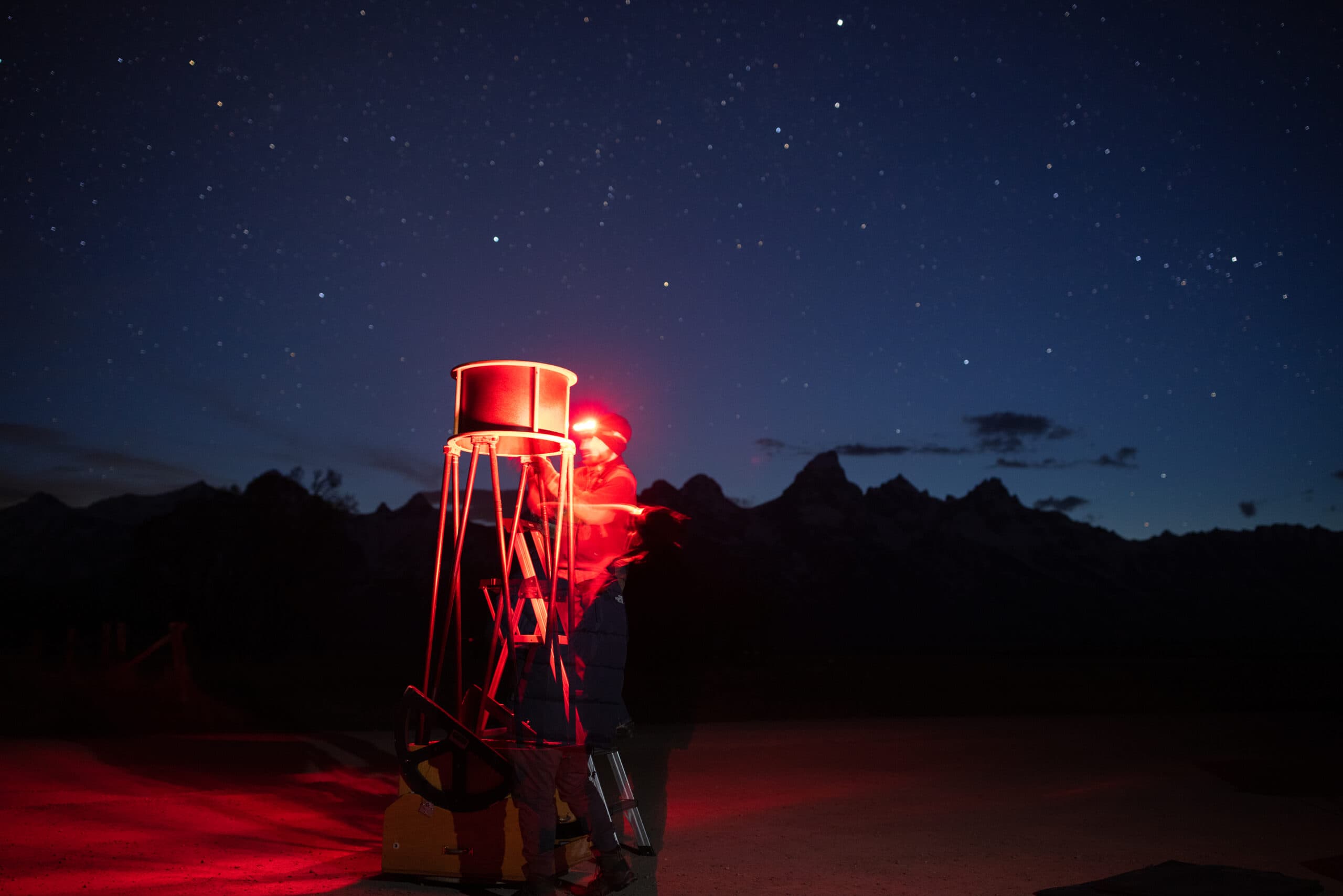
The Rise in Dark Sky Tourism
Dr. Singer moved to a tiny town in northern Nevada when he was ten years old. He spent nights with his father and a store-bought telescope studying the night sky. Later, at Hampshire College in Amherst, Massachusetts, he majored in physics and astronomy and built a telescope as part of an independent study his freshman year. It was during this time that he plotted his life’s course. During his junior year, he led a telescope building class and then built an observatory for the college for his senior thesis.
“I found out that I didn’t want to be a professional astronomer and do things like data research, grant writing, and proposals,” he says. “That’s not what I love about the night sky. So, I would set up my telescope on campus and ask people if they wanted to see Saturn.”
Dr. Singer landed in Jackson Hole and launched Wyoming Stargazing in July 2013 as a nonprofit during the fledging years of astrotourism interest. Enthusiasm took off fast due to NASA’s outreach efforts, the premier of “Cosmos: A Spacetime Odyssey” (which was a follow-up on the 1980 PBS series Cosmos: A Personal Voyage), and the availability of night sky images on computers. Soon, a more comprehensive form of Dr. Singer’s nighttime college campus productions were coming to fruition.
“Hotel concierges started asking how much I’d charge for private guests,” Dr. Singer says. “Before long, I was hosting a couple viewings a week. Then, Spring Creek Ranch hired me on as a staff astronomer. Soon, I was getting online bookings, and by the end of the third year, it became my full-time gig.”
“The eclipse in 2017 didn’t hurt,” he adds. “We were already established—it was our day in the sun, quite literally, and it brought Wyoming Stargazing to the next level. I hired a full-time staff member, and we had so many bookings we started turning people away.”
Today, Wyoming Stargazing’s team of seven people (most of whom have astronomy degrees) entertains eager viewers as they stargaze in select locations in Grand Teton National Park or private residences in Jackson Hole. Wyoming Stargazing programs focus on offering inspirational and educational experiences. Dr. Singer starts the evening by having clients get acquainted with the night sky on an iPad using the Starwalk app. Then, he sets up a telescope with a mirror diameter ranging from twenty to twenty-five inches, which provides detailed views of the moons, planets, nebulae, galaxies, and stars. Next, he weaves it all together with the story about the evolution of the universe and how we, as humans, got here. This mind-blowing event takes guests on a bucket-list journey that extends into the wee hours of the morning.
And it doesn’t stop there.
Wyoming Stargazing also offers online streaming shows for anyone to see, as well as private astrophotography lessons and year-round public stargazing programs. The organization is also directly involved in the development of the future Snow King Observatory and Planetarium, which will house the United States’ largest modern research telescope devoted to public outreach and will be the first ski resort observatory and planetarium in North America. Dr. Singer anticipates running the astronomy programs when it is completed. The observatory is slated to begin construction by spring 2022.
For those who prefer the DIY approach, Dr. Singer advises purchasing a good telescope (he likes the Dobsonian telescope design). Then, download the Starwalk iPad app to learn where the constellations are in the night sky during certain times of the year. (He says that an old-school paper star map and a red headlamp work just as well.)
Skymaps.com offers free monthly star charts by latitude. Dr. Singer always recommends looking at constellations with the naked eye and going out during a new moon for the best viewing.
“It’s something you have to invest some time into to fully get comfortable,” he says. “Pull out a blanket, lay on your back, and do it during every season of the year. After a while, you get a feel for where the constellations are in the night sky.”
Prehistoric humans had an intimate connection to the natural world. Dr. Singer explains that the earliest people knew that when new points of light appeared in the sky, it was going to affect human life. And while modern times have dampened native connection with the night sky, perhaps it’s time to regain it. Thankfully, local night sky crusaders will continue to help us steer our way through the stars.




